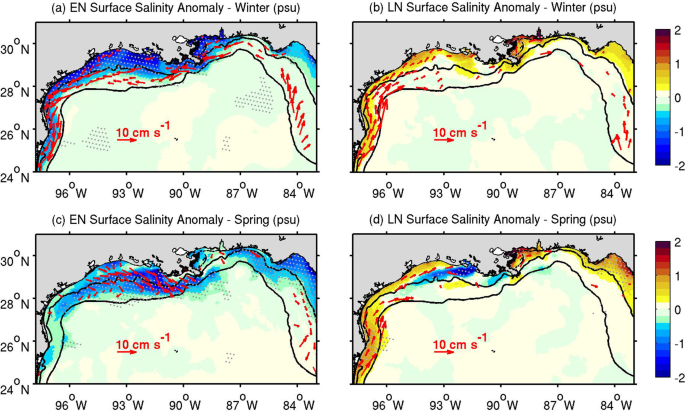NGI Researchers Study ENSO-Induced Co-Variability of Salinity, Plankton Biomass and Coastal Currents in the Northern Gulf of Mexico
March 5, 2019
The manuscript "ENSO-induced co-variability of Salinity, Plankton Biomass and Coastal Currents in the Northern Gulf of Mexico", by Fabian A. Gomez, Sang-Ki Lee, Frank J. Hernandez Jr., Luciano M. Chiaverano, Frank E. Muller-Karger, Yanyun Liu, and John T. Lamkin, has been recently published in Scientific Reports (
https://www.nature.com/articles/s41598-018-36655-y). This study is based on a regional ocean-biogeochemical model, complemented with satellite and in situ observations, which shows that El Nino-Southern Oscillation (ENSO) is a main driver of interannual variability in salinity and plankton during winter and spring in the northern Gulf of Mexico. Composite analysis reveals a strong asymmetry between El Nino and La Nina impacts, with much larger disturbances during El Nino. Changes in salinity and surface winds impact significantly on coastal circulation, which in turn determines the spatial extent and distribution of the ENSO-induced plankton biomass variability. The paper findings highlight that ENSO-induced changes in salinity, plankton biomass, and coastal circulation across the northern Gulf of Mexico are closely interlinked and may significantly impact the abundance and distribution of fish and invertebrates.
To view the license and permissions click the following link:
http://creativecommons.org/licenses/by/4.0/.
